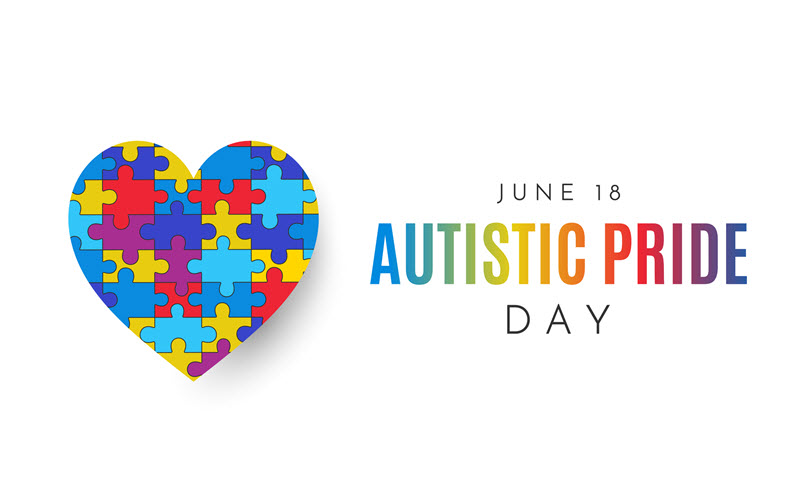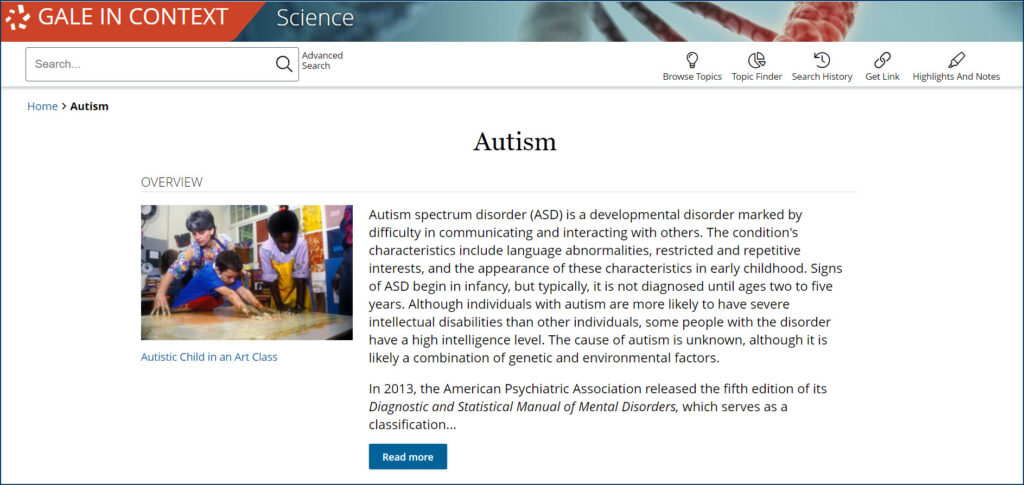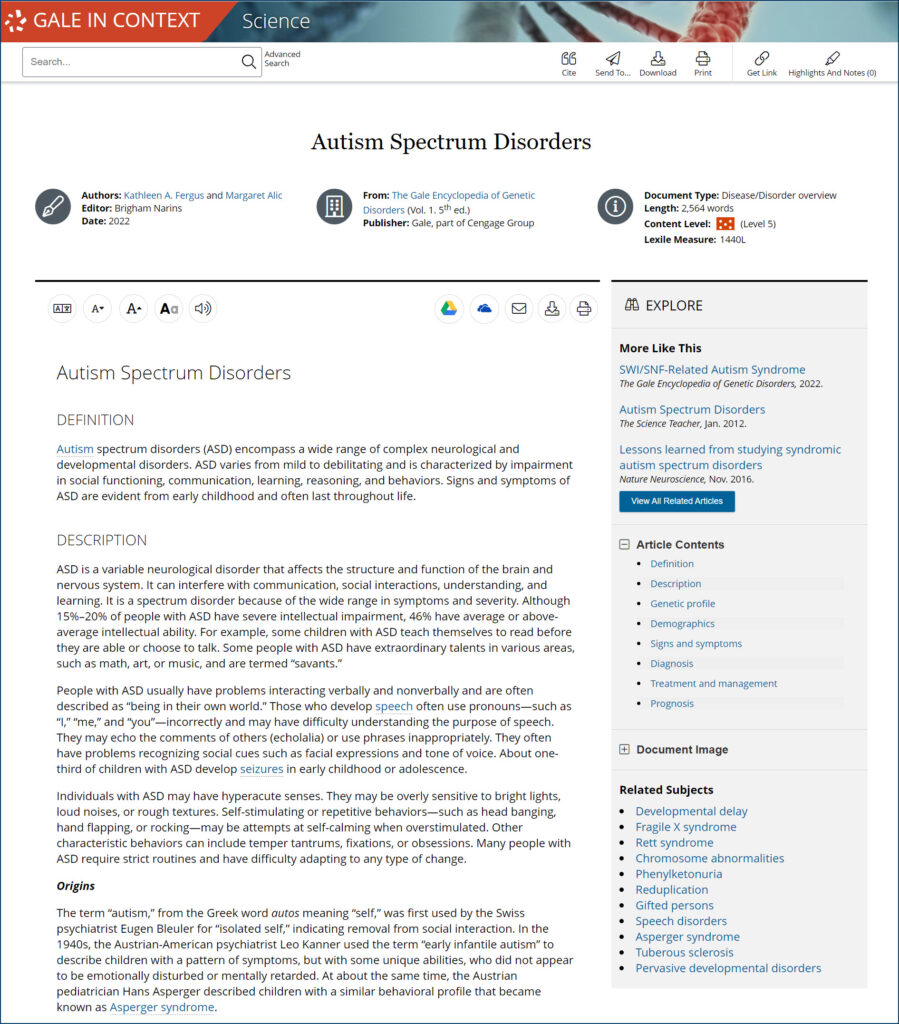| By Gale Staff |
June 18 is Autistic Pride Day, a celebration of self-advocacy organized by the autism community to “promote inclusion, understanding, and neurodiversity . . . on [a] journey towards a more inclusive world for Autistic people.”
The holiday was spearheaded in 2005 by Aspies for Freedom after members of the group expressed frustration with the general perception of autism as a disease requiring a “cure.” Instead, they wanted the autistic community to have a special day to recognize their differences and abilities rather than focus on their perceived disability.
As such, one of the primary goals of Autistic Pride Day is to uplift voices from within the community and celebrate neurodiversity rather than fear it as something negative that needs to be (or can be) fixed. Educators can be allies in these efforts and celebrate the spirit of Autistic Pride Day by cultivating classrooms where autistic students know they are safe to self-advocate and appreciated and respected for their whole, authentic selves.
These efforts will naturally involve students working with research content. With a subscription to Gale In Context: Science, teachers can trust that learners are working with dependable sources, exploring diverse perspectives, and accessing age-appropriate material—a guarantee that Google simply can’t offer. The platform is designed to help every student access what they need to learn, with translation tools and read-aloud features available for the more than 25,000 educator-vetted resources available through the autism topic portal.
We’ll share a selection of those materials as we discuss how educators can address barriers to creating an accepting, inclusive classroom.
A note before we continue: While there is some contention about acceptable language when referring to autistic people, the community consensus favors identity-first language—“autistic person”—rather than person-first language—“person with autism.” We will respect that preference.
Center the Celebration
Autistic Pride Day is all about pushing back against biases while celebrating the autism community and the value of diversity in our collective human experience. Some notable community members worth celebrating include:
- Jessica-Jane Applegate: Paralympic swimmer and eight-time medalist (three gold, two silver, three bronze).
- Jake Barnett: An extremely talented mathematician and scientist who attributes his abilities to being autistic.
- Callum Brazzo: A designer who launched the Aut Couture clothing brand, a line that “represents the pride and passion of people with the spectrum disorder.”
- Wentworth Miller: Prison Break actor who was diagnosed as autistic at the age of 49 and spoke out about the experience as being a “long, flawed process in need of updating.”
- Yuh-Line Niou: New York assemblywoman and the first known autistic woman elected to a state legislature.
- Satoshi Tajiri: The creator of the Pokémon franchise.
- Greta Thunberg: Environmental activist regarded for her bravery in addressing climate change on the global stage as a teenager.
- Jacob Valazquez: A pianist who began playing at the age of 4. He has since gone on to become a multi-instrumentalist, songwriter, music director, and producer.
- Alexis Wineman: The winner of Miss Montana 2012 and the first autistic contestant in the Miss America Pageant. She now uses her platform for autism advocacy.
These conversations about the autism community and their contributions are also an excellent opportunity to open the classroom to discussion about how different perspectives and experiences can strengthen us rather than limit us.
Educate Students About Autism
The concept of autism can feel a bit intangible to neurotypical students, so it’s essential to have a frank conversation about the physical, mental, and emotional effects.
First, start with the fact that autistic brains look and function differently than non-autistic brains. They have a thicker cerebral cortex in the upper frontal lobes, which controls behavior and social skills. Because of the thicker tissue, the lobes receive less blood, affecting their development and function.
Interestingly, deficits in the frontal lobe encourage stronger, more powerful nerve signals in the lower part of the brain—specifically, the hippocampus, which controls memory. Consequently, autistic individuals can have exceptional abilities when it comes to remembering information about a topic they care about and recognizing patterns that others don’t notice.
It’s also important to explain that autism is considered a “spectrum disorder,” meaning that it affects individuals differently in varying degrees. Each case is unique and personal, so they can’t assume that someone is or is not autistic based on the presentation of behaviors or whether they meet certain stereotypes.
That said, it can be helpful to understand some common behaviors, all of which are the result of the way that autistic brains interpret information:
- Difficulty with social interactions, particularly when understanding implicit communication like tone of voice and body language. Autistic peers may not respond to social cues in the same way that neurotypical peers would, avoiding eye contact, not smiling as often, or using a vocal volume that seems too loud for the situation.
- Many autistic individuals “stim” or engage in repetitive movements. These stimming behaviors are classified into two categories. Lower-order behaviors are physical movements, like hand flapping, rocking, snapping, and pacing. Higher-order behaviors are the routines and rituals that give autistic people the sense of “sameness” that they seek.
- Autistic classmates often have passionate interests in specific topics. These interests are a source of joy and an important bridge to connecting with others.
- Overstimulation and frustration can lead to “meltdowns”—sudden, intense reactions to feeling overwhelmed—and “shutdowns”—retreating physically or mentally from a situation. When meltdowns or shutdowns happen, students should give their peers time and space to cool down and then ask what they can do to help them feel more comfortable.
It’s helpful to point out that we all have unique ways of responding and interacting with others, and this is no different. Just as they understand that one friend needs space when they’re upset, another might rely on talking things out to get their thoughts and emotions in order. Responding to their autistic peers with consideration of their needs is just another way that they show empathy and understanding for someone else’s way of navigating the world.
Share Methods of Supporting Autistic Peers
Autistic students and their peers often have more in common than they might think. Still, teenagers may not know how to navigate these social hurdles, so we have to give them the proper tools to do so.
Bond Over Shared Interests
One of the easiest and most natural ways to foster acceptance amongst students is for them to have positive, shared experiences.
Consider creating clubs and hosting activities targeting special interests your autistic students are passionate about. These clubs are the perfect backdrop for teenagers to bond and share a common ground from which friendships can grow.
Use Clear, Straightforward Communication
Autistic individuals process information differently than neurotypical individuals and often interpret language more literally. Students should understand that idioms, metaphors, sarcasm, and communication require “reading between the lines,” which can be confusing and lead to misunderstandings.
Clear, straightforward language reduces the cognitive load of decoding what’s being said, resulting in more accessible and fewer anxiety-inducing social interactions.
Be Aware of the Environment to Prevent Sensory Overload
Students should understand that their autistic peers are more likely to become overstimulated when processing too much sensory information at once, such as loud noises, bright lights, and touch sensations.
Teach students the importance of direct, empathetic check-in questions like, “Is this lighting okay with you?” or “Do you need to take a break from the noise?” to ensure their peers can focus on the learning during partner or group activities.
Make It Clear That They’re Safe to Be Themselves
Christine M. Condo, an autistic writer and advocate, shares how exhausting “masking” can be in her piece, “‘You don’t look autistic’: The reality of high-functioning autism.”
“Imagine being keenly aware of every single element of your environment, all the time, especially those you normally, reflexively ignore. Then imagine that . . . you concentrate on maintaining an elaborate performance to relate to those around you while suppressing your natural mode of speaking and acting. Before I learned how to do this daily performance, people would cringe from my blank face, my monotone speech, my impatience with normal pleasantries. If it sounds exhausting and demoralizing, it is.”
Share the quote with students as a jumping-off point for a conversation. One of the kindest, most empathetic things students can do for their autistic peers is to encourage them to be their authentic, genuine selves without fear of judgment.
Respecting the Purpose of Autistic Pride Day
To finish up, we wanted to share a quote from a blog post written by Kabie Brook, the cofounder and chairperson of Autism Rights Group Highland:
“The most important thing to note about the day is that . . . it originated from and is still led by autistic people . . . That means that this is not a day for the larger charities or organizations to promote themselves, it is not a day for them to fundraise or stifle Autistic people’s expressions. It is a day for boosting and supporting Autistic people. A day we own, a day where we will hear positive stories instead of pity.”
It’s important to keep that sentiment at the core of everything we do as allies to the autism community. Our job is not to speak for them, pity them, or change them; it’s to accept them as they are and teach others how to do the same.



